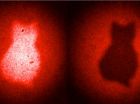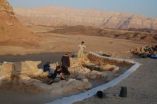(Press-News.org) Respiratory infection control measures – which have been adopted by most health agencies to deal with the Ebola epidemic in west Africa – are unnecessary, and may heighten panic and fear among the public, according to the authors of a new letter, published in The Lancet, and written by Professor Jose M. Martin-Moreno from the University of Valencia in Spain, and colleagues.
Ebola virus is primarily transmitted through contact with infected patients' blood, vomit, faeces and other secretions, both direct and indirect, from contaminated needles and other materials. This usually occurs via close family contact or in healthcare settings, and the virus is rarely transmissible via airborne routes. However, according to the authors, "Although these routes of transmission are well known, most agencies, including governmental agencies responsible for repatriating western patients, apply infection control measures appropriate for airborne diseases."
"Excessive precautions could offer reassurance to those responding to Ebola, yet complete respiratory protection is expensive, uncomfortable, and unaffordable for countries that are the most affected. Worse, such an approach suggests that the only defence is individual protective equipment, which is inaccessible to the general population. Moreover, the image of workers with spectacular protective clothing might contribute to the panic in some communities. If this leads people to flee affected areas it could increase the spread of infection. It also reinforces the view that some lives are more valuable than others, already engendered by decisions about the use of experimental Ebola drug ZMapp."
The letters concludes, "In western Africa now there is a need for rational and efficient use of protective equipment. This can only be achieved by communicating a consistent message that the disease is essentially transmitted through direct contact. In control of infectious diseases, more is not necessarily better and, very often, the simplest answer is the best."
INFORMATION:
The Lancet: Respiratory infection controls being used for ebola patients are unnecessary and may contribute to public panic
2014-08-28
ELSE PRESS RELEASES FROM THIS DATE:
Indoor mold poses health risk to asthma sufferers
2014-08-28
Damp and mould in homes could pose a significant health risk to people with asthma according to a new study published in the Journal of Allergy and Clinical Immunology.
By critically reviewing the findings from 17 studies in eight different countries, the research has found that the presence of several types of mould can lead to breathing problems in asthma sufferers, as well as increasing the likelihood of developing the condition.
The research has been conducted by a team at the University of Exeter Medical School and is the first time all of the information relating ...
Synthesis produces new antibiotic
2014-08-28
HOUSTON – (Aug. 28, 2014) – A fortuitous collaboration at Rice University has led to the total synthesis of a recently discovered natural antibiotic.
The laboratory recreation of a fungus-derived antibiotic, viridicatumtoxin B, may someday help bolster the fight against bacteria that evolve resistance to treatments in hospitals and clinics around the world.
As part of the process, Rice organic chemist K.C. Nicolaou and structural biologist Yousif Shamoo and their colleagues created and tested a number of variants of viridicatumtoxin B that could lead to the simplified ...
Inter-dependent networks stress test
2014-08-28
Energy production systems are good examples of complex systems. Their infrastructure equipment requires ancillary sub-systems structured like a network—including water for cooling, transport to supply fuel, and ICT systems for control and management. Every step in the network chain is interconnected with a wider network and they are all mutually dependent. A team of UK-based scientists has studied various aspects of inter-network dependencies, not previously explored. The findings have been published in EPJ B by Gaihua Fu from Newcastle University, UK, and colleagues. These ...
Quantum physics enables revolutionary imaging method
2014-08-28
This news release is available in German. Researchers from the Institute for Quantum Optics and Quantum Information (IQOQI), the Vienna Center for Quantum Science and Technology (VCQ), and the University of Vienna have developed a fundamentally new quantum imaging technique with strikingly counterintuitive features. For the first time, an image has been obtained without ever detecting the light that was used to illuminate the imaged object, while the light revealing the image never touches the imaged object.
In general, to obtain an image of an object one has to illuminate ...
This is your brain's blood vessels on drugs
2014-08-28
WASHINGTON, Aug. 28, 2014—A new method for measuring and imaging how quickly blood flows in the brain could help doctors and researchers better understand how drug abuse affects the brain, which may aid in improving brain-cancer surgery and tissue engineering, and lead to better treatment options for recovering drug addicts. The new method, developed by a team of researchers from Stony Brook University in New York, USA and the U.S. National Institutes of Health, was published today in The Optical Society's (OSA) open-access journal Biomedical Optics Express.
The researchers ...
Ancient metal workers were not slaves but highly regarded craftsmen
2014-08-28
In 1934, American archaeologist Nelson Glueck named one of the largest known copper production sites of the Levant "Slaves' Hill." This hilltop station, located deep in Israel's Arava Valley, seemed to bear all the marks of an Iron Age slave camp – fiery furnaces, harsh desert conditions, and a massive barrier preventing escape. New evidence uncovered by Tel Aviv University archaeologists, however, overturns this entire narrative.
In the course of ongoing excavations at Timna Valley, Dr. Erez Ben-Yosef and Dr. Lidar Sapir-Hen of TAU's Department of Archaeology and Near ...
Global warming pioneer calls for CO2 to be taken from atmosphere and stored underground
2014-08-28
Wally Broeker, the first person to alert the world to Global Warming, has called for atmospheric CO2 to be captured and stored underground. He says that Carbon Capture, combined with limits on fossil fuel emissions, is the best way to avoid global warming getting out of control over the next fifty years. Professor Broeker (Columbia University, New York) made the call during his presentation to the International Carbon Conference in Reykjavik, Iceland, where 150 scientists are meeting to discuss Carbon Capture and Storage.
He was presenting an analysis which showed that ...
Neuroscientists watch imagination happening in the brain
2014-08-28
"You may say I'm a dreamer, but I'm not the only one," sang John Lennon in his 1971 song Imagine.
And thanks to the dreams of a BYU student, we now know more about where and how imagination happens in our brains.
Stefania Ashby and her faculty mentor devised experiments using MRI technology that would help them distinguish pure imagination from related processes like remembering.
"I was thinking a lot about planning for my own future and imagining myself in the future, and I started wondering how memory and imagination work together," Ashby said. "I wondered if they ...
Protected areas proven to protect biodiversity
2014-08-28
Protected areas conserve biodiversity and more action is needed to ensure safeguards are in place to protect these areas, researchers say.
Published in PLOS ONE, researchers from Monash University, Stellenbosch University and the University of Exeter, used meta-analysis - combining results from different studies - to look at the past 30 years of research into these areas, to determine whether they actually protect biodiversity.
Dr Bernard Coetzee, School of Biological Sciences, said protecting an area from human exploitation made common sense, however, up until now ...
Serotonin transporter is a mifepristone pharmacological target
2014-08-28
In the central nervous system, serotonergic transmission is critically regulated by serotonin reuptake through the serotonin transporter. As a crucial pharmacological target of antidepressants, the role of erotonin transporter in treatment of major depression is well-established. Dr. Chaokun Li and co-workers from Xinxiang Medical University in China cloned the human brain serotonin transporter into Xenopus oocytes, to establish an in vitro expression system. Two-electrode voltage clamp recordings were used to detect serotonin transporter activity. Their results show that ...



